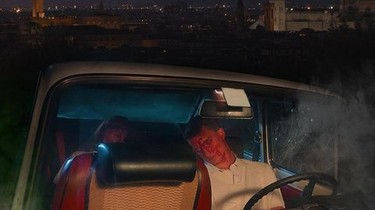The Killer Story Told Without a Pulse
- Trevor Verbiest
- May 12
- 3 min read

In 2020, journalist and filmmaker Andrea Vogt released The Monsters of Florence, a 95-minute Millstream Films and Media documentary. This documentary attempts to unpack one of Italy’s most infamous serial murder cases, which spanned from 1968 to 1985 and left sixteen people dead—eight couples murdered while parked in the hills surrounding Florence. This case remains officially unsolved. Despite its chilling content, the documentary struggles to match the horror and urgency of the real events. It’s overloaded, structurally messy, and emotionally distant.
The film opens with context on the killings, then jumps into interviews with journalists, former detectives, lawyers, and relatives of the victims. The problem isn’t a lack of material—the film is overflowing—but a lack of structure and storytelling. Viewers are thrown between timelines and theories with little connective tissue. Some interviewees are introduced without context or framing, and the editing doesn’t do enough to clarify who is speaking and why it matters. The result is a confusing and often disengaging experience, especially for viewers new to the case.
What’s more frustrating is how emotionally distant the film feels. These were brutal crimes. The killer not only shot the couple but also mutilated the female victim’s body posthumously. In multiple cases, organs were removed and taken from the scene. These were ritualistic, calculated murders that terrorized an entire region, yet the film glides over many of the forensic and psychological details. By holding back on the horror, the documentary loses the intensity that defines this case.
The 800-page case file, excerpts of which appear in Douglas Preston’s reporting, offers far more chilling and specific descriptions of the crime scene and suspects than anything Vogt’s film dares to show. For a documentary, it’s surprisingly timid. Crime scene photos are blurred or absent. There are almost no visual recreations or diagrams to orient the viewer. That decision may have been made out of respect, but it also undercuts the film’s ability to truly convey what happened. The story becomes abstract when it should feel raw and disturbing.
One thing the documentary does get right is showing how flawed the Italian investigation was. Authorities cycled through suspects, fixated on the wrong people, and even arrested journalists like Mario Spezi, who criticized the official narrative. Vogt includes interviews that illustrate the chaos and institutional failures that helped bury the case in red tape. These moments, while brief, are among the film’s strongest. They remind us this wasn’t just a story about a killer—it was also a story about a broken justice system that collapsed under pressure and scrutiny.
Unfortunately, those moments are rare. Much of the film is padded with long interviews that don’t reveal much. The pacing is sluggish, and the transitions between segments are clunky. It lacks the urgency and rhythm we’ve come to expect from strong true crime storytelling. There are no chapters, no rising action, and no emotional climax—just a stream of testimony that never fully coheres.
Even visually, the film is unremarkable. The cinematography is static and heavily reliant on talking-head interviews. These are a few aerial shots of Florence and archival photos, but little else to create atmosphere or mood. For a case as eerie and cinematic as this one, the setting feels entirely underused.
To the film’s credit, it doesn’t sensationalize or distort. It sticks closely to the known facts and presents a wide range of voices. That sense of journalistic restraint is admirable, but storytelling requires more than facts. It requires focus, pacing, and emotional truth, all of which are lacking here. For those already familiar with the case, it might offer new insights. But for anyone coming to the story fresh, it’s unlikely to leave a lasting impression.
One major missed opportunity is the treatment of Pietro Pacciani, a local farmer and convicted rapist who became the main suspect in the 1990s. His trial captivated Italy, but the documentary rushes through the details without explaining why the case against him fell apart—or how the court’s reversal left the public more confused than before. The same goes for the so-called “Sardinian trail” and the theory that multiple people were involved, possibly as part of a cult. These ideas were introduced but never fully explored, which is a shame because they could have added narrative depth and tension.
The Monsters of Florence is, at its core, a story about obsession: the public’s fixation on the murders, the investigators’ tunnel vision, and journalists’ struggle to tell the truth. Vogt’s film understands that, but never fully conveys the weight of it all. It’s a documentary that knows what happens but struggles to show us why it mattered—or why it still does. With tighter editorial control and sharper storytelling, this could have been the definitive film on the case.


